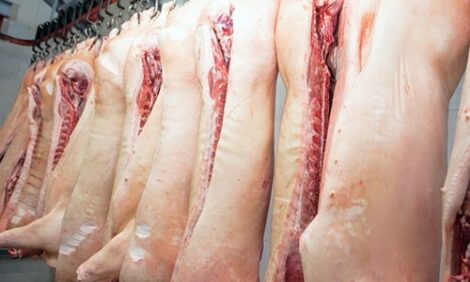



Commentary: 1 September 2010 Hogs and Pigs Report
US - Dr Mike Brumm, Extension Swine Specialist, University of Nebraska comments on the latest report.With profits returning to US pork producers, the pace of decline in the breeding herd has slowed, as expected. However, the general trend of improved productivity of the breeding continues, as the shifting of breeding herd in the US.
Iowa remains the dominate pork production state with 30.88 per cent of the kept for market inventory. This matches with the previous peaks of 30.86 per cent and 30.87 per cent in 1 March and June reports of 2009. The pigs for Iowa farms continue to flow from surrounding states. Both South Dakota and Illinois continue to widen the spread between their breeding herd and kept for market inventory when expressed on a percent of the US inventory basis.
In the case of Illinois, the spread is due to investment in new production facilities and improved productivity. On the other hand, South Dakota is showing only modest growth in the breeding herd, with a continued decline in the pigs kept in the state for growth to slaughter.
North Carolina’s breeding herd continues to gradually decline. The 1 September 2010 inventory of 870,000 head is the lowest since 1 June 1995 when the breeding herd was 840,000 head. North Carolina’s breeding herd peaked at 1,050,000 head on 1 September 2004. This means North Carolina’s current breeding herd inventory is 82.9 per cent of the 2004 peak.
For comparison, the US breeding herd inventory on 1 September 2010 is 96.8 per cent of the 1 September 2004 number. Some of this decline in North Carolina inventory is due to the bankruptcy filings of Coastal Plains and Cohaire Farms in the past year in that state.

Female productivity continues to climb. For the June to August 2010 pig crop, the pigs per litter for the US was 9.81. Minnesota, Nebraska, South Dakota and Utah producers reported over 10 pigs per litter averages.

With this report, I went back and computed the trend line for the kept for market inventory since the 1 March 1988 report (22+ years of data). While we have bounced around, the general growth of the kept for market inventory averages 1,461,000 head per quarter since that date with a relatively strong correlation coefficient (R2=0.760).
Missing from my commentary this quarter are reliable data on Canadian feeder pig imports to the US. As most readers know, USDA has reported difficulties with accuracy of the data. However, earlier this week they released data thru the week ending 21 August 2010. For now at least, it appears that imports of Canadian feeder pigs is relatively steady at approximately 90,000 pigs per week, with a majority of these pigs ending up in Iowa facilities.
Even with rising corn prices, producers remain optimistic about future profits. This is evidenced by the increase in the spot market price for SEW pigs and feeder pigs in the past several weeks.
Further Reading
| - | You can view the full report by clicking here. |








